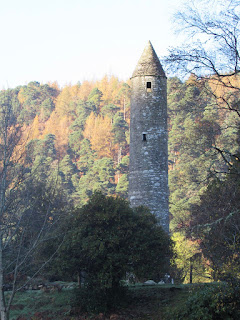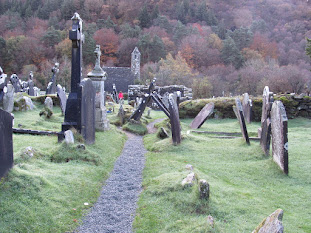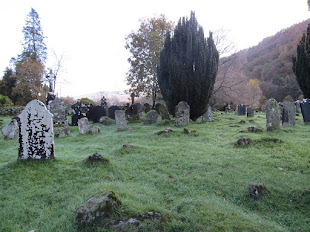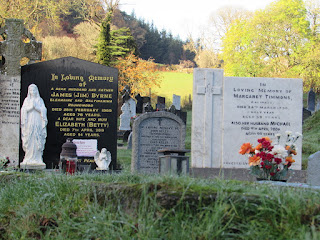Dublin was founded in 841 by the Vikings. They called their new settlement Duvlin, which means Black Pool named after the color of the rivers that looked black. A settlement had been established in the area by the Gaels during or before the 7th century. In 1170, the Normans arrived. They built churches on the tops of hills. The city expanded rapidly from the 17th century and was briefly the second largest in the British Empire and sixth largest in Western Europe.
Following independence in 1922, Dublin became the capital of the Irish Free State, renamed Ireland in 1937. Dublin is a center for education, arts and culture, administration and industry. As of 2018, the city was listed by the Globalization and World Cities Research Network (GaWC) as a global city, with a ranking of "Alpha minus", which places it as one of the top thirty cities in the world.
Here are several tidbits about Dublin that explain its history and culture.
Saint Patrick was a fifth-century Romano-British Christian missionary and bishop in Ireland. Known as the "Apostle of Ireland", he is the primary patron saint of Ireland, the other patron saints being Brigit of Kildare and Columba. He is credited with bring Christianity to Ireland.
 Saint Patrick's Cathedral was founded in 1191 as a Roman Catholic cathedral. It is currently the national cathedral of the Church of Ireland.
Saint Patrick's Cathedral was founded in 1191 as a Roman Catholic cathedral. It is currently the national cathedral of the Church of Ireland.
 The Guiness Brewery
is located on a half-square mile complex in Old Dublin on James Street (above).
It was founded in 1759. Today, it produces 3 million pints for the local population.
The Guiness Brewery
is located on a half-square mile complex in Old Dublin on James Street (above).
It was founded in 1759. Today, it produces 3 million pints for the local population.
Guiness is very generous and socially-conscience. One third of Dublin's social housing is run by Guiness or at least financed by the company.
The harp is part of the company logo.
Trinity College dates back to Queen Elizabeth I who founded it in 1592. The institution plays host to the Book of Kells, handwritten copies of the Bible that were written by medieval monks. The university started out as a monastic site before it became an institution of higher learning. It sits on 42 acres.
I walked on the campus, a familiar place for me after nearly 50 years on college campuses as a student, a publicist, and a professor.
While I was sitting on a bench in the main square, I ran into a Chinese couple who were taking photos of each other. The man is studying English so that he can work on a master's degree in information systems management. His young wife was with him although she was not very fluent in English as he was.
He asked me what I did during my career and I told him. He seemed to think that I was an accomplished professor. I had reached a goal as he is aspiring to reach his. I'm sure he will. University campuses are places of hope and ambition--always.
General Post Office
It was here that the 1916 rebellion and the war for independence began. The building was badly damaged. Bullet holes from that time can still be seen.
Parnell Square
Parnell Square, a Georgian design, was formerly called Rutland Square until it was renamed after Charles Stewart Parnell (1846–1891). Parnell was an Irish nationalist politician who served as a Member of Parliament (1875-91), Leader of the Home Rule League (1880-82), and Leader of the Irish Parliamentary Party (1882-91). His party held the balance of power in the House of Commons during the Home Rule debates of 1885–1886. Parnell was one of the best political organizers of an Irish political party, and one of the most formidable figures in parliamentary history. Despite his talent for politics, a personal scandal detracted from his image. Ultimately, he was unable to secure his lifelong goal of obtaining Irish Home Rule.
Many notable buildings are here in this distinguished square including Chapter One, one of Dublin's most acclaimed restaurants, and the Writers Museum. Conway's Bar (now closed) is the place outside of which Patrick Pearse surrendered to the British Army after the 1916 Easter Rising. The political party Sinn Féin
has its Dublin head office here near the offices of a number of trades unions
and other organizations. Many famous people also live and have lived in this area.
 The Georgian Mile
is an unofficial term used to describe a continuous, mile-long street
largely lined with Georgian townhouses.
According to The Irish Times, the stretch was once dubbed "the longest
and arguably the finest Georgian streetscape in the world." It was built
by the Anglo-Irish wealthy families between the 1780s and the 1830s. Many famous people lived here. Today, the buildings house offices with apartments on the top floors. In the old days coal was imported and used for heating. The coal was stored in caves in the subterranean parts of the buildings.
The Georgian Mile
is an unofficial term used to describe a continuous, mile-long street
largely lined with Georgian townhouses.
According to The Irish Times, the stretch was once dubbed "the longest
and arguably the finest Georgian streetscape in the world." It was built
by the Anglo-Irish wealthy families between the 1780s and the 1830s. Many famous people lived here. Today, the buildings house offices with apartments on the top floors. In the old days coal was imported and used for heating. The coal was stored in caves in the subterranean parts of the buildings.
Economy
Dublin has 1.5 million people living here out of a 5 million population in the country. Many major corporations including the pharmaceuticals, digitals, financial services have located here. There is no heavy industry.
Rentals are high averaging 2,000 Euros per month. The average household salary is 38,000 Euros. Ireland must import fossil fuels and much of the cost for this energy has been due to the Ukrainian War. The government has tried to ease the burden on households by providing families with 200 Euros per month.
Irish Fun Night


The Irish are well-known throughout the world for their music, singing, and dancing. It is their great gift to humanity. This singing group didn't fail to disappoint. Our group had an Irish dinner--with whiskey and Irish coffee--and a little entertainment. It was great fun and a memorable evening!!! It is evenings like these that make the country come alive and share its spirit with visitors. Here are snippets of the performances.
"Too-La-Roo-La-Ral"
Traditional Irish Dancers
"Danny Boy"
Upon reflection
I have thoroughly enjoyed this trip even though it is a bit grueling to ride the bus for long distances. However, what we see and do inspires me to return here for a longer and more leisurely trip. I'm not sure when or how, but Ireland and Scotland have truly captured my soul!
These countries have struggled with war, pestilence, famine, and attempts to tamp down their culture, language, and identity. But they have survived and endured. What spirit! Perhaps this spirit is best reflected in their music and architecture. The big, black sturdy stones of Edinburgh reflect the strength and drive of the Scots--as well as their kilts and bagpipes. Such a display of manliness with an underlying kindness was beautiful. The mystical lands of the Emerald Isle uplift and dazzle the soul; the inspire spiritual connection with the Divine. Finally, one very common experience of my time with the Scots and the Irish was their extraordinary friendliness and welcoming hospitality to us strangers from other lands. They treated us as friends, not just tourists. They allowed us to see their souls.
Resources
Andrew Speed, guide for CostSaver Travel Company
Wikipedia










































 Glendalough is also known as Gleann-Dá-Locha (the valley of the two lakes).
Glendalough is also known as Gleann-Dá-Locha (the valley of the two lakes).

